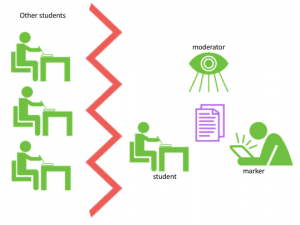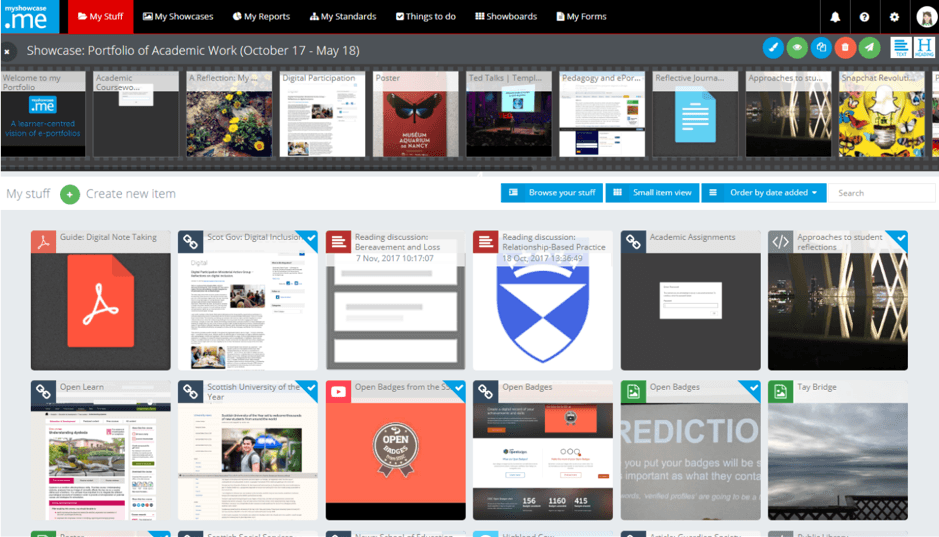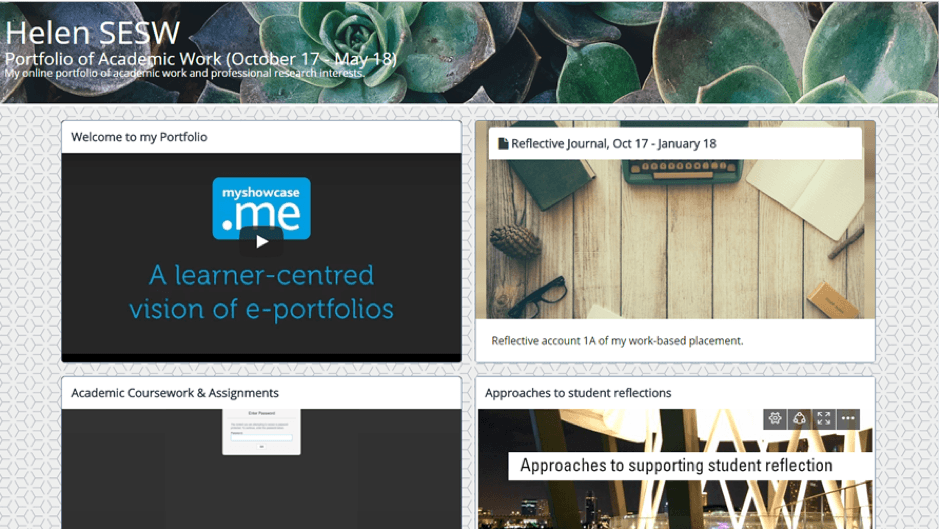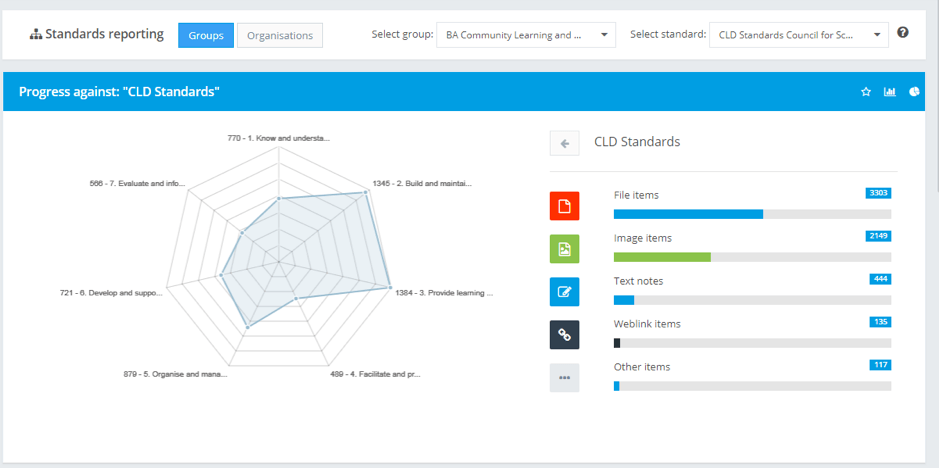Yesterday, we asked you to start looking at innovation in assessment – to think about ideas you’ve read about / have tested yourself.
The most common assessment model is one where 1 student creates the work, for a primary audience of 1 (the marker) – and a secondary audience of the moderator/external/etc. Other students are very firmly excluded from the audience.
While we’ll look at wider audiences later in the week, today we’re considering this model – a very standard experience on the part of staff and student.

(Created using images from the Noun Project)
Rather than looking alternative models to this – we’ll look at innovative ways for students create and present the assignment.
ePortfolios
In the School of Education and Social work, staff have made extensive use of a tool called MyShowcase.me Helen Booth describes the tool.
“Myshowcase.me is an e-portfolio tool that provides students with a personal online learning space to store academic coursework and to collect and curate digitised artefacts and map evidences of their learning to professional standards frameworks. Community Learning and Development and Social Work students are formatively assessed to demonstrate their learning as they progress allowing them to build up evidence incrementally in their portfolios to ensure continuous learning occurs until submitted for final review.
Students are expected to think about the evidence and processes for constructing an e-portfolio and the reasons they were chosen and identify what they have learned. This process includes:
– Collect
– Select
– Reflection
– Connect
– Present
There are a range of tools and resources for developing, organising, and sharing materials (curation of documents, images, web-based apps, and recording video) to capture activities to help support students think independently to shape the process and development of their e-portfolio. Evidence brought into the e-portfolio can be tagged and mapped against a competency-based framework criterion, e.g. CLD Standards Council for Scotland and SSSC Codes of Practice to monitor their own progress and learning.
The submitted e-portfolio is a simple web page with an overview commentary and links to digitised evidence-based artefacts. This is an additional advantage for reviewers being able to provide feedback and comment. Students own and have personal control of Myshowcase.me and can take their portfolio of academic work with them after they graduate supporting employment opportunities and lifelong learning.”
Audio / Video reflection
While the example above looks at creating a whole ePortfolio, we have many courses that ask students to write reflective pieces. For many students reflecting generally is difficult. If we then add to that the need to structure it into a written item, it can be very daunting for students.
There is, therefore, a move towards allowing students to reflect on camera – it’s not a new idea, Hansen (1990) suggests the idea of “self analysis”. Today, we have many tools that enable easy video creation – most students have 1 in their pocket.
On campus, we now have Panopto, which allows both audio and video to be captured and/or uploaded. Students could create audio or video sections, and add the URL either to a longer written section, or use it for the whole reflection. If you’re interested in finding out more about this tool, contact us.
References:
Hansen, E. (1990). The Role of Interactive Video Technology in Higher Education: Case Study and a Proposed Framework. Educational Technology, 30(9), 13-21. Retrieved from http://www.jstor.org/stable/44427470






